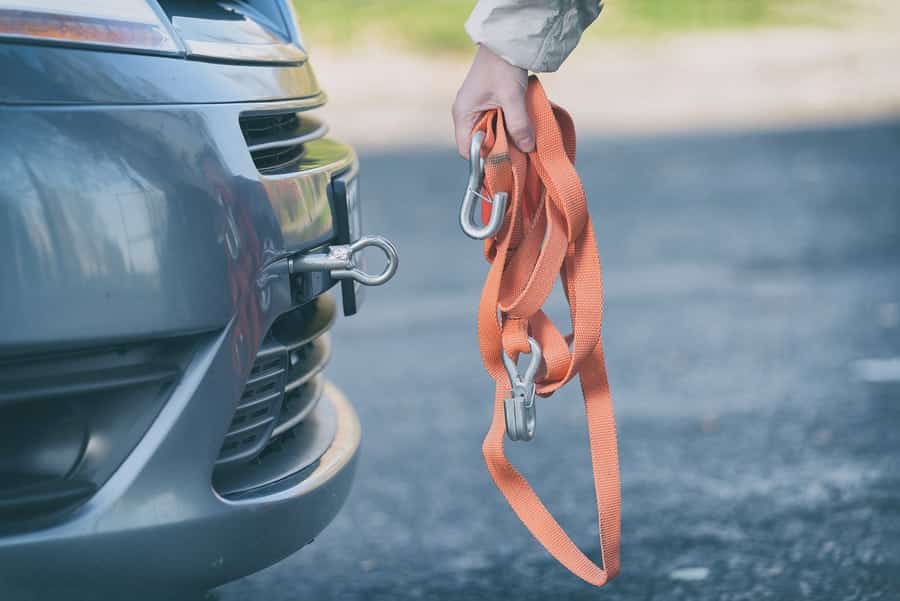
At some point in your life you might need a tow. Whether that’s because of a breakdown now, or your electrical car runs out of juice in the future, there’s no better way to get a downed vehicle off the road. Especially if you don’t have breakdown cover.
And there are times when your safety might be compromised, if you leave a broken down car on the road. You could need a quick tow to a safe place. Other times you may still need to be towed by the breakdown company. How do you get towed safely?
Table of contents:
- Towing – The Basics
- How to ready a car to be towed
- Driving the Tow Car
- Driving the towed car
- And Finally
Towing – The Basics
In order to tow a car you’ll need the following:
A powerful car capable of performing the tow – use a little common sense here, without having to look up the engine specification. You’ll want to use a car at least as large, or preferably larger, to provide the power for the tow. SUVs are ideal for this purpose.
Tow rope or bar – don’t use a damaged, frayed or older piece of equipment. Make sure you inspect it before using it. Even if it’s a new purchase, a breakage could be dangerous on the road. Bars and ropes will also come with a maximum load allowance (the weight that they can pull) – make sure that this is not exceeded.
Two towing eye brackets – these metal brackets are the attachment points on a car, used to harness and secure the tow rope. You’ll find them at the front or the rear of the car, and depending on the make and model, they could either be a ring, or part of the structure.
A towing sign – it’s a legal requirement that you clearly display a sign indicating a car is being towed at the rear of the vehicle. Let other motorists know, so they can check their behaviour around you, giving you the appropriate extra space and distance.
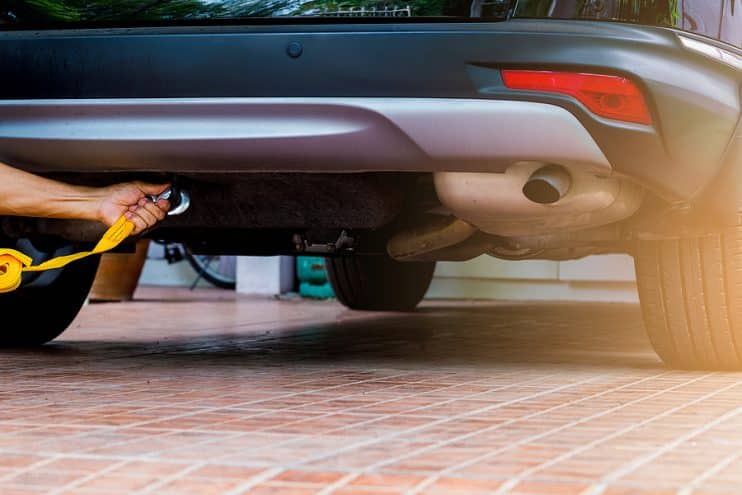
How to ready a car to be towed
Follow these simple steps to set your car up for towing…
1) Firstly find the tow points on the vehicle, which can be found in the owner’s manual, or if you don’t have it with you, then a quick search on your phone’s web browser will help. It is dangerous to try to tow a car, if the tow point is broken or missing, in which case you may need to call a professional.
2) Sometimes tow points are protected by plastic covers that can be pried off with a screwdriver. Once this is free, then attach the towing eye to the tow point, and make sure it’s tightly mounted, using a wheel brace if necessary.
3) Fasten the ends of the tow rope or tow bar to the front towing eye of the car that’s going to be towed, and to the rear point of the tow vehicle. As a rule, you should find that ropes are longer than tow bars, which may mean you need to reverse the tow car into position to attach the bar to the vehicle.
4) Once this process is complete, then it’s time to put the on tow sign in a place where it can clearly be viewed by other road users, and you’re ready for the next step – how to tow on the open UK roads.
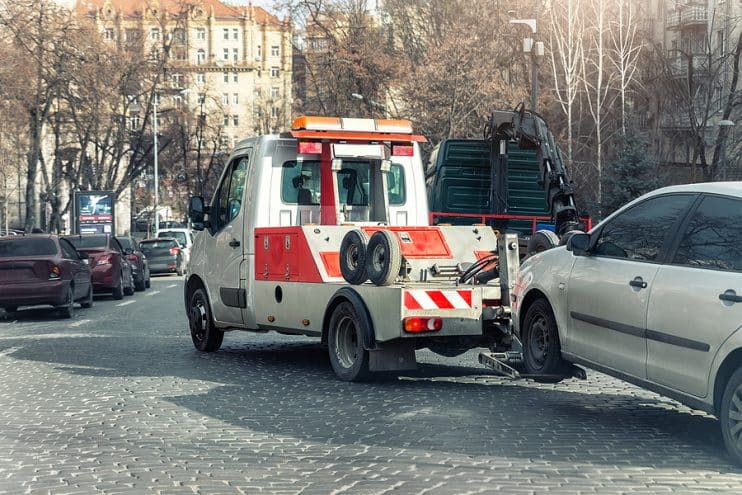
Driving the Tow Car
Driving the tow car takes a degree of concentration and awareness. Stay safe on the road by following these steps:
Get some signals together – for instance get the driver behind to agree to some signals. A flash of the lights could mean slow down, and a quick beep on the horn could be the cue to pull over.
Check your speed – you’ll want to drive at a very slow pace, to ensure that you maintain control of the car being towed. Try to keep your speed smooth and consistent, which will allow you to contend with any sudden situations that arise on the road.
Be gentle with the clutch – accelerate slowly and smoothly, to prevent the car being towed from suddenly lurching forward – as this could be dangerous for the driver, whipping them in their seat, and could put severe strain on the tow rope.
Wait for space – other drivers should give you a bit more consideration if they see that you’re towing a vehicle, but don’t count on it. Make sure you have lots of space to make moves on the road, and give the other driver more than sufficient warning of your next move – depress the brake gently, before slowing down, and indicate early.
Be generous with the corners – take the corners slowly and carefully, going round the long way. If you attempt to take one too tightly, then the tow rope could cut across the verge, endangering pedestrians or impacting road furniture.
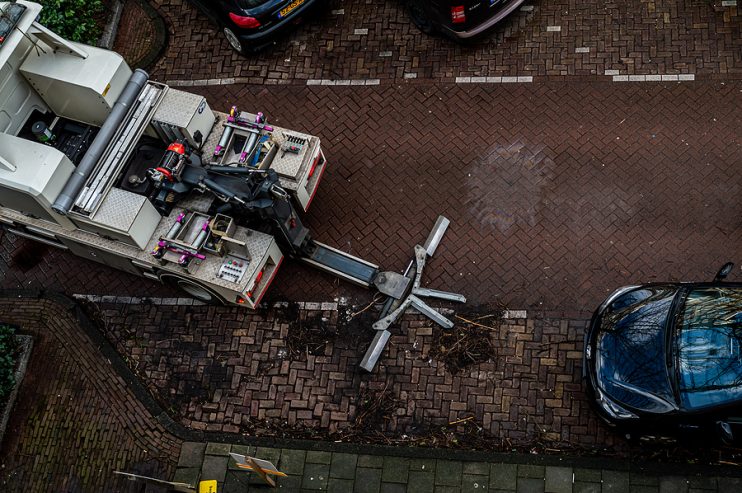
Driving the towed car
It’s tough being towed – possibly even harder than being in the lead car. It’s counterintuitive as you’re used to being in control behind the wheel. Follow these steps to stay in control throughout your journey…
Get the car ready – make the necessary checks before you set off. Gear should be in neutral, the handbrake needs to be off and you’ll want to turn on the ignition to disengage any steering lock. Things might be a little more complex with larger SUVs or automatic vehicles, requiring a bit of research on your phone or a delve into your owner’s manual.
Compensate for the loss of power – most modern cars use power from the engine to boost the steering and brake hydraulics. If your engine is out of action, you’ll need to put a bit more boost into your braking and be prepared for harder steering. Be ready to put in the effort.
Keep your eyes open – don’t have anything in the car that could distract you, as you’ll need to concentrate on the actions of the lead car, steering and braking in accordance with its movements and lights.
Use the brakes carefully – Remember that a tow bar might feel solid, but it won’t help with braking. And if your rope becomes slack, then gently applying the brakes will allow you to restore tension – preventing the rope from rubbing on the ground, and minimising jolts and shudders.
Don’t risk it – and if at any point you feel uncomfortable behind the wheel then use the prearranged signals – such as the horn or the hazard lights – to pull over. Even if you just need a rest or are getting a little stressed and worried, it’s always better to be on the safe side, than risk an accident.
And Finally
Remember that towing a car isn’t easy, and should be reserved for emergency situations. Trying to pull a car that’s too heavy could give you trouble with the law, which states that you should only be towing a vehicle to a safe place. If you can leave a tow till outside the busier times, then take advantage of this opportunity. Always approach towing with safety in mind.

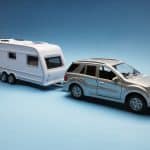
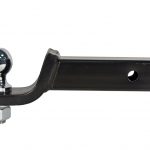
.png)